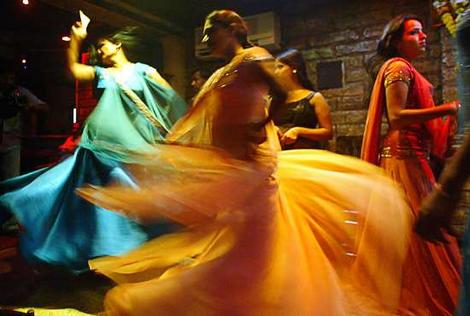Dancers in the dark
 The liquor doesn’t stop flowing as two young women, aged 18-20, dance to the flicker of torches and the beat of drums.
The liquor doesn’t stop flowing as two young women, aged 18-20, dance to the flicker of torches and the beat of drums.
In a farmhouse in Sagar district in north-central Madhya Pradesh (MP), 180 km from Bhopal, an all-male party is in progress: a boy has been born in the family.
Off to a side, guests take turns to have sex with two young women brought in for the party. After a few hours, the dancers and the sex workers swap places.
“The raee dancers were covered from head to toe in their traditional attire. Their dance was based on stories from the Ramayana, ” said a visitor at the party, who is organising one such occasion in October on his wife’s insistence. “It’s a status symbol,” he said.
Defenders claim it is a traditional dance form of the Bundelkhand region, but an investigation by Hindustan Times reveals that the raee dance form is increasingly becoming a cover for the trafficking in girls and young women of the Bedia caste. And this is a fate that is being meted out to several dance forms across India.
“The growing practice is to send girls at the age of five to six to experienced raee dancers in towns,” said Sarika Sinha, 32, regional manager of non-governmental organisation Action Aid in Bhopal. There are about 700 raee performers in Sagar district. They all come from the Bedia community and are demanding scheduled tribe status.
Girls in the villages are either too shy or scared to speak, except for those who have left the profession. “My parents were pushing me into the trade. I did go for raee twice, but was disgusted. They were more interested in my body than in the dance,” said Lakshmi, a young woman in her 20s. “So I ran away from my parents’ house, took shelter at my uncle’s place and married the driver of Champaben, who has been fighting for our cause.”
Champaben, 80, is a Gandhian who came to MP as part of Vinoba Bhave's Bhoodan (land donation) movement in the fifties and now her mission is stop the trafficking in girls in this manner. In September last year she organised a demonstration at India Gate in Delhi demanding a ban on raee dance.
Former MP Chief Minister Digvijay Singh introduced a scheme to offer livelihood to women traditionally employed as raee dancers. However, the scheme met with little success. “This (dance and prostitution) is forced on young girls by birth. It’s inhuman. We wanted to put a stop to their exploitation by bringing them into the mainstream. But the project failed," Singh said.
However, the dance does have its supporters. "They are not scantily dressed in biknis but are covered from head to toe. Raee performers have gone abroad. Their dance has been as appreciated as bharatnatyam,” said Gopal Bhargawa, panchayat and rural development minister, MP. “Our government does not favour a ban on the dance."
Vishnu Pathak, (65), former head of the audiovisual department and performing arts at Sagar University, says that the Indian Council for Cultural Relations should not encourage this dance form as people would not like to be associated with raee publicly. " People don’t encourage their daughters to learn raee as it’s not an accepted form of dance," he said.
The changing fortunes of raee dance appear to mirror the changing fortunes of Bundelkhand’s feudal lords. "Earlier they were treated as official mistresses of feudal lords. Later people with money continued the practice. Still there used to be some code of ethics.
The royalty/feudal lord used to take care of the children born out of their relationship,” said Raja Bundela, who is spearheading the movement for statehood for Bundelkhand, “But now the mafia has taken over the trade. They have no love for the dance form or the performer. They believe in their physical exploitation.”